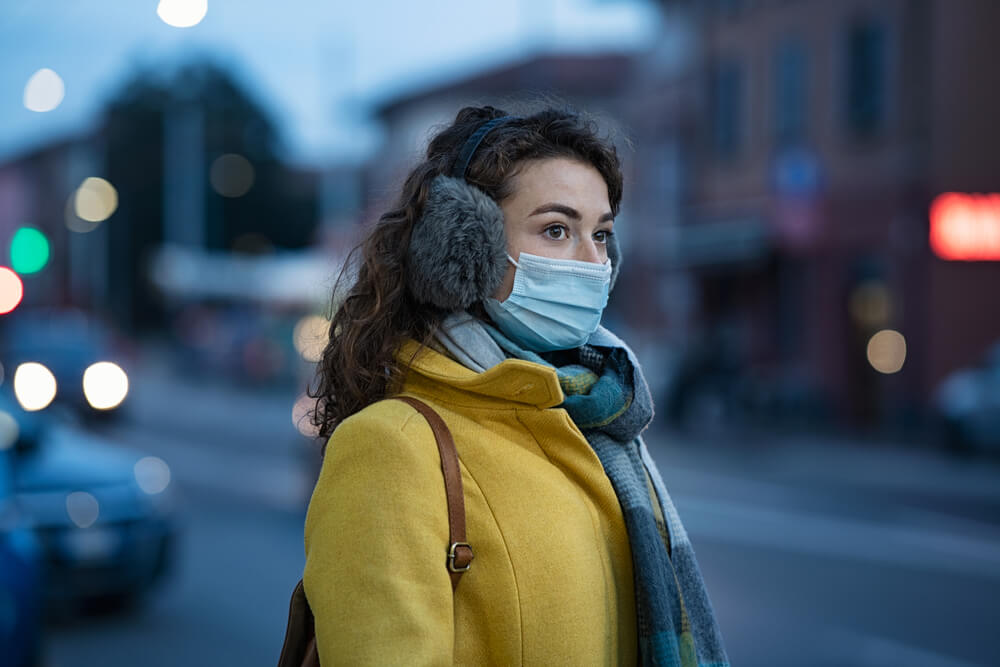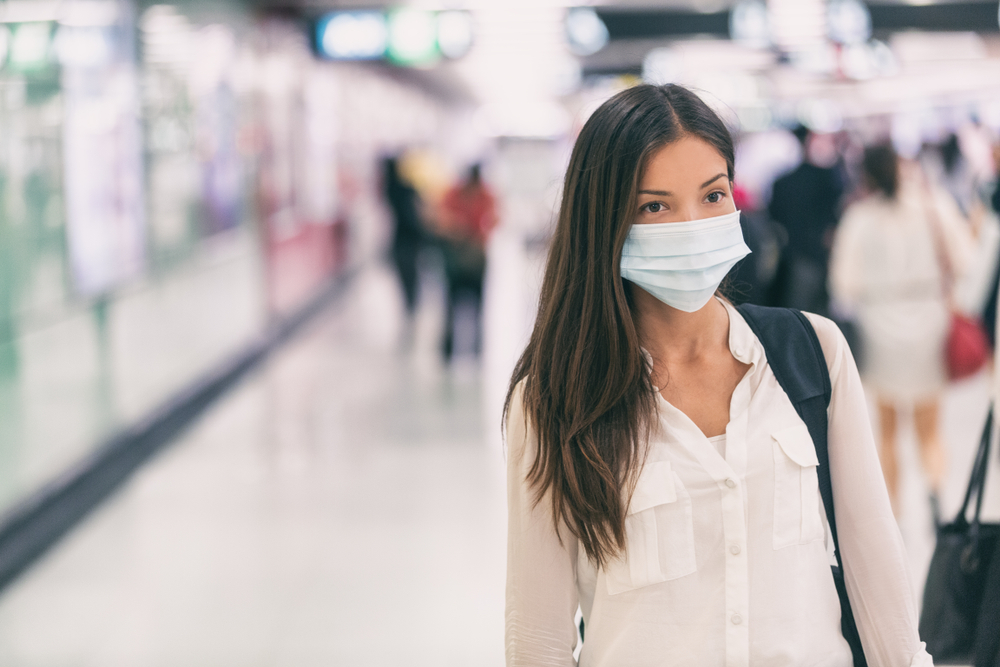Published Dec 23, 2021, in Independent.co.uk
By Joanna Whitehead
In pre-pandemic days, if you got a sniffle and a headache, you might dismiss it as an ordinary cold and carry on as normal, even if you felt a little rough around the edges. But during cold and flu season, how can you be sure it’s a cold and not Covid-19?
The bottom line is – without a test, you can’t. Because while the typical symptoms of a cold are a headache, sore throat and runny nose, those are now some of the primary indicators of Covid too.
On Thursday, 23 December, researchers behind the ZOE Covid study warned that those with a sore throat, runny nose and a headache – all symptoms of a common cold – likely have the Omicron variant.
With Omicron cases spreading rapidly, Professor Tim Spector, who helped found the Covid ZOE app, told the BBC that anyone with these symptoms should take a Covid test. More than 106,000 people tested positive for the virus in the 24 hours to 22 December, while the weekly average has increased by 58.9 per cent.
“The number of new symptomatic cases has exploded over the last week,” Professor Tim Spector, who helped found the Covid ZOE app said.
“For most people, an Omicron positive case will feel much more like the common cold, starting with a sore throat, runny nose and a headache.”
He added: “You only need to ask a friend who has recently tested positive to find this out. We need to change public messaging urgently to save lives.”
The common cold is caused by a different strain of virus to Covid, however.
Most coronaviruses, such as the common cold, cause mild infection in the upper respiratory tract and produce relatively minor symptoms.
People who contract Covid suffer from respiratory symptoms that can cause coughing, shortness of breath, difficulty breathing and fever. The infection can also cause pneumonia, kidney failure and in the most serious cases, death.
In most people, common cold symptoms usually peak within the first two to three days of infection, while the effects of Covid appear two to 14 days after exposure.
Christina Marriott, chief executive of the Royal Society for Public Health says: “Growing evidence shows that people who’ve received two doses of the vaccine typically present with less severe symptoms, such as headache, runny nose, sneezing, sore throat, and loss of smell.
“It’s important for people who’ve been fully vaccinated to stay vigilant for cold-like symptoms, and get tested if they’re living or working around people who are at greater risk from the disease.”
Professor Irene Petersen, a professor of epidemiology and health informatics at University College London, adds: “A runny nose and headache are symptoms of many infections, but may also be the first symptoms – and only symptoms – of Covid. Therefore, if you have these symptoms, I’d encourage you to use lateral flow tests (LFT) for a couple of days.
“The first few LFT tests may be negative, but if you have Covid the tests are likely to become positive within a couple of days. Also, if you know other people around you have Covid, the likelihood your runny nose and/or headache is also Covid is much higher.”
Although the main Covid symptoms drummed into us by the government are a high temperature, a new, continuous cough and a loss or change to your sense of smell or taste, the Delta variant, which is still currently the dominant Covid strain in the UK, has different symptoms, either instead of, or as well as, those main symptoms.
The ZOE Covid Symptom Study, which is funded by the UK government, has identified the top symptoms associated with Covid and says they differ slightly depending on whether you’ve been vaccinated or not.
Headache
Although headaches are a less well-known symptom of Covid, they are one of the earliest signs, according to the ZOE study, and are more common than the classic symptoms of cough, fever and loss of smell.
The study found Covid headaches tend to be moderately to severely painful, can be “pulsing”, “pressing” or “stabbing”, occur across both sides of the head rather than in one area, may last for more than three days and tend to be resistant to regular painkillers.
Runny nose
Last winter, the ZOE study found that a runny nose was the second most commonly reported symptom after headaches, with nearly 60 per cent of people who tested positive for Covid with loss of smell also reporting having a runny nose.
But now the data indicates that the prevalence of the disease is the most significant factor. So, when Covid rates are high, the chances of a runny nose being due to the virus are also high.
The study also stresses that when Covid rates are low, a runny nose is less likely to indicate the sufferer has caught the coronavirus and is more likely to be due to a cold or even an allergy.
It concludes that while many people with Covid may report a runny nose, it’s difficult to call it a definitive symptom as it’s so common, especially during winter.
Sneezing
The ZOE study found sneezing more than usual can be a sign of Covid in people who’ve been vaccinated, although it stresses sneezing is much more likely to be a sign of a cold or an allergy.
It says that even though many people with Covid might sneeze, “it’s not a definitive symptom because sneezing is so common”.
Sore throat
Many people with Covid have reported via the ZOE Study app that they have a sore throat that feels similar to one you might experience you get when you have a cold or laryngitis.
Covid-related sore throats tend to be mild and last no more than five days so a very painful one that lasts longer is likely to be something else. If it persists, you should contact your GP.
Although it can be a Covid symptom, most people with a sore throat will probably just have a cold. According to ZOE’s data, almost half of people who are ill with Covid report having a sore throat, although this is more common in adults aged between 18-65 than the elderly or those under 18.
Loss of smell
This continues to be the strongest indicator of Covid infection, regardless of a person’s age, sex or illness severity.
While people who have Covid might not lose their sense of smell completely, it may change, so you may not be able to smell strongly-scented things, and your sense of taste may be affected too, so food may taste different or seem tasteless.
Persistent cough
A persistent cough is widely agreed to be one of the three main symptoms of Covid but, according to the ZOE study, only around four in 10 people who are ill with the virus will experience this.
In this context, “persistent” means coughing many times a day, “for half a day or more”.
A Covid cough is usually a dry cough, compared with a chesty one that brings up phlegm or mucus and that may indicate a bacterial infection. A persistent cough tends to arrive around a few days into the illness and usually lasts for around four or five days.
Getting tested is crucial
If you’ve only had one dose of the vaccine, the ZOE study found the top symptoms were similar to those of people who were double-jabbed, but a cough was also common. And for those who were unvaccinated, symptoms were also similar, with the addition of fever and a cough. If you have any of the symptoms, you should self-isolate at home and get a PCR Covid test as soon as possible.
Alex Richter, a professor of clinical immunology at the University of Birmingham, who is part of a team that has developed a test to detect Covid antibodies in people with mild symptoms, says: “It’s impossible to tell the difference between a cold and Covid-19 clinically. They present so similarly that only PCR testing can differentiate between the two. Lateral flow testing can help with screening, but if someone has symptoms, they should go for a PCR swab test.”
And Alan McNally, a professor of microbial evolutionary genomics at the same institution, who was infectious disease lead at the Milton Keynes Lighthouse Lab – the UK government’s first flagship Covid testing facility – adds: “If you have any symptoms of respiratory infection you should stay at home to prevent transmission and get a test done. Trying to self-diagnose is a sure fire way to send Covid case rates soaring again.”




